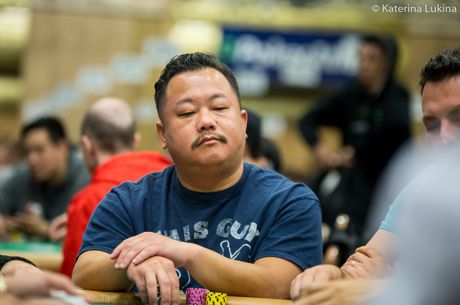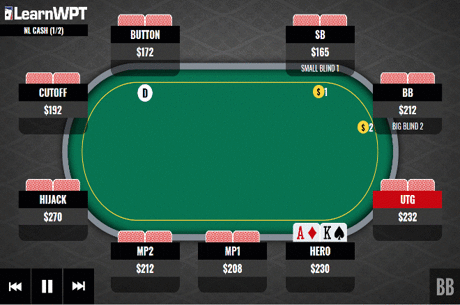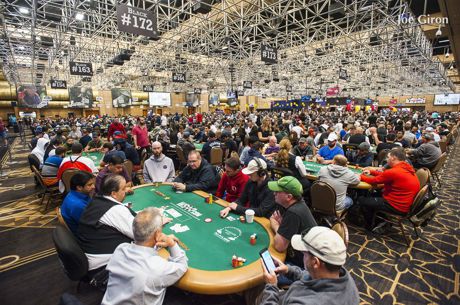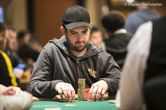Tommy Angelo Presents: How to Make Yourself Less Squeezable
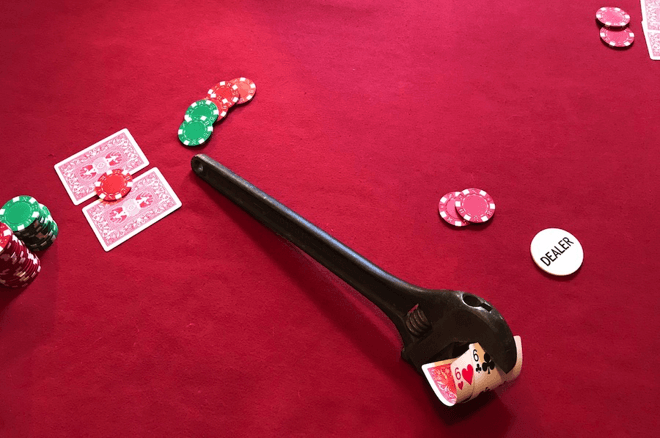
Squeeze is a great poker word. It's right up there alongside flop-lag and string-bet and bust-out. Words that depict the meaning, and capture the feeling.
Joe bets, Moe calls, and Curly raises. In this story, Moe just got squeezed. He's caught between two players applying pressure. He's got a medium-strength hand, good enough to call the initial bet, but not good enough to call a raise, especially from behind. So Moe has to fold to Curly's raise after calling Joe's bet. He got squeezed out of the pot.
Being squeezed is when you call a bet, and then fold, all on the same street.
Being the squeezer is much more gratifying. Here's a fun example.
The Double Squeeze
In bridge, a double squeeze is a rare and sophisticated coup. Poker's double squeeze is not all that rare, or sophisticated. But it feels just as good to do it.
Playing $2/$5 no-limit hold'em, the first two players limp, and you limp along with 6-6. The cutoff and button join the celebration, as does the small blind. The big blind — a player you know well — puts the squeeze on the field by raising to $35. The first two limpers both call.
You're definitely not folding, so the choice is to call or raise. You know the big blind's squeezing range in this situation includes suited connectors of all sizes, and you know he's not a maniac — he'll fold the bottom half of his range to your three-bet when he's out of position. You conclude that your hand is a favorite against his range. Plus he might fold. And if you reraise, you'll be re-squeezing the players who just called the big blind's $35 squeeze raise.
So you raise to $150.
And look what happens to the $70 from the limpers. Chances are high they'll both fold to your raise. You harpoon their live money and make it dead, putting profit in your pocket. It doesn't matter if the big blind folds, calls, or reraises. With your raise, you create dead money, to the benefit of whoever is in the pot at the time of death.
Sometimes it's a public service to three-bet, to clear out the riff-raff and sweeten the pot with their donations before the heads-up portion of the hand commences between you and the other aggressor.
We've established that squeezing is a good thing when we do it to them. Let's figure out how to keep them from doing it to us.
Closing the Action
When you close the action, you can't be raised. When you're not closing the action, you might be raised. That's a huge difference that is forever a factor in the squeeze game. There are times when a decision should be based on whether or not you are closing the action.
Striving for Lastness
Every time you call a bet with a hand that can't stand a raise, you are walking into a potential squeeze play. For this to be worth the risk, you need to have a viable chance at securing last position in the event no one squeezes.
On the button, for example, it's right to risk getting squeezed by the blinds before the flop because if they don't squeeze, you now play the pot as last to act.
Another example. Three players see the flop. Joe is first. You are second. Moe is last. Joe bets out. You want to call because you've got a decent hand and Joe plays bad. But you know your hand will hit the muck if Moe raises because Moe has position and he plays good. But if you do call Joe's bet, and Moe folds, which often happens, you'll be last to act in a heads-up pot against Joe with the turn and river coming. And that in itself is money in the bank.
After weighing the intangibles, you decide that the cost of being squeezed by Moe is less than the positional value you gain should he fold. So you call.
Preflop Anti-Squeeze Plays
Playing $2/$5 NLHE, a player in front of you opens to $20. Let's say you have a hand you'd like to play for $20, but not for $80. In that case, you should fold, unless you're on the button in which case you should call. From the cutoff, you should call if the button is tame.
This conservative strategy will not only save you money every time you would have been squeezed, it will also keep you from calling too many opening bets from bad positions with mediocre hands. You'll be saying no thanks to the iffiest of situations.
Same with limped pots. If one or more players limp in front of you for $5, don't limp along unless you're prepared to call a raise to roughly $30. Except from the button and cutoff. From those seats, you can limp along with a wide range of hands, planning to fold if squeezed. It's worth the $5 investment because of your position.
Limped Pots
Let's replay the first hand. This time you have 9-8-suited in middle position instead of 6-6. Under the gun limps for $5. You limp along, as do the cutoff and button. The small blind completes. The big blind raises to $35. The first limper calls.
And you fold. Every time. For life.
You fold your drawing hands in this situation because if you call, you make it even more correct for the button or cutoff to call, and if one of them calls, it's ruinous for you because now you're not last. Also, by calling, you are drawing a target on your chips. You are enticing the cutoff, button, and blinds to three-bet to create dead money. And if that happens, all hope for achieving positional sanctuary is lost because your cards will be in the muck.
The exception is if you look left and see signs of folding from the cutoff and button. Then it's okay to call the $35.
Postflop Squeezing
One player limps for $5. You limp on the button with 9-7-offsuit. The small blind makes it $30. The limper calls. All three of you have lots of chips, and you are closing the action, and you will be last to act on every street. So you call.
The flop is Q-9-6, two-tone. You have second pair. After squeezing preflop, the small blind checks the flop. You suspect a slowplay with A-A, K-K, Q-Q, 9-9, or 6-6. Either that or he has an unimproved pocket pair or A-K, and there's a good chance he's planning to fold to a bet.
After the small blind checks, the original limper bets $80 into the $95 pot. You put him on either a made hand or a draw, most likely a draw. If the pot were heads-up, you would call or raise for sure.
But there's still the problem of the polarized player in the small blind, who is about to either check-raise or muck.
In squirmy squeezy situations like this one, I fold, even though I could very well have the best hand. Maybe I got tired of calling a good-sized bet on the flop or turn, only to get raised off the pot by a third player, without seeing the next card. To the equity-based side of my brain, that's a mathematical catastrophe. And I'm willing to forfeit fractional amounts of EV to avoid those.
How To Be Less Squeezable
First, let's define the situation:
- It's not the river.
- Three or more players are in the pot.
- Somebody bets, it's now your turn, and there is at least one player to act behind you.
In that spot, to play the squeeze game right — unless you can stand a raise, or unless you already own last action for the hand — just fold.

World-class coach and author Tommy Angelo is now offering poker pain relief to everyone. You can schedule a call to talk to Tommy about bad betting, bad quitting, bad tempers, or whatever else is hurting your game. Just go to tommyangelo.com. Angelo's first book, Elements of Poker, was called "the seminal poker text of the 21st century" by The London Times, and it has revolutionized the way serious players approach the game.

